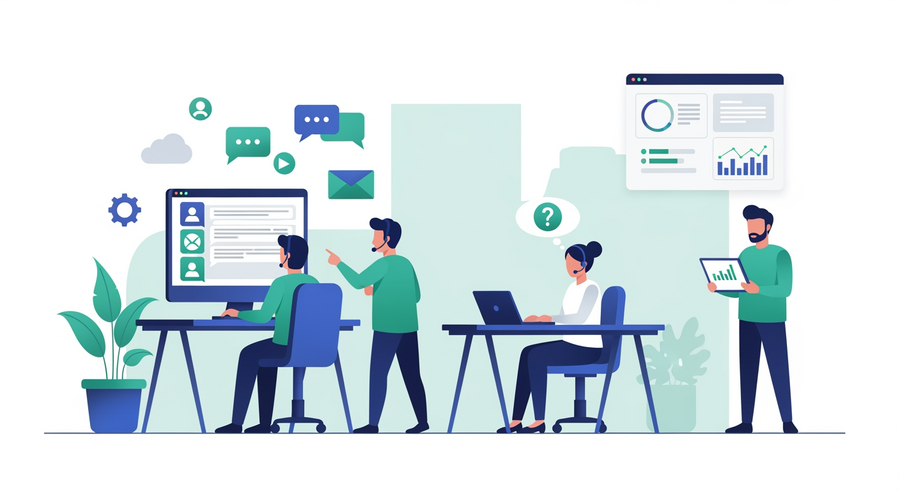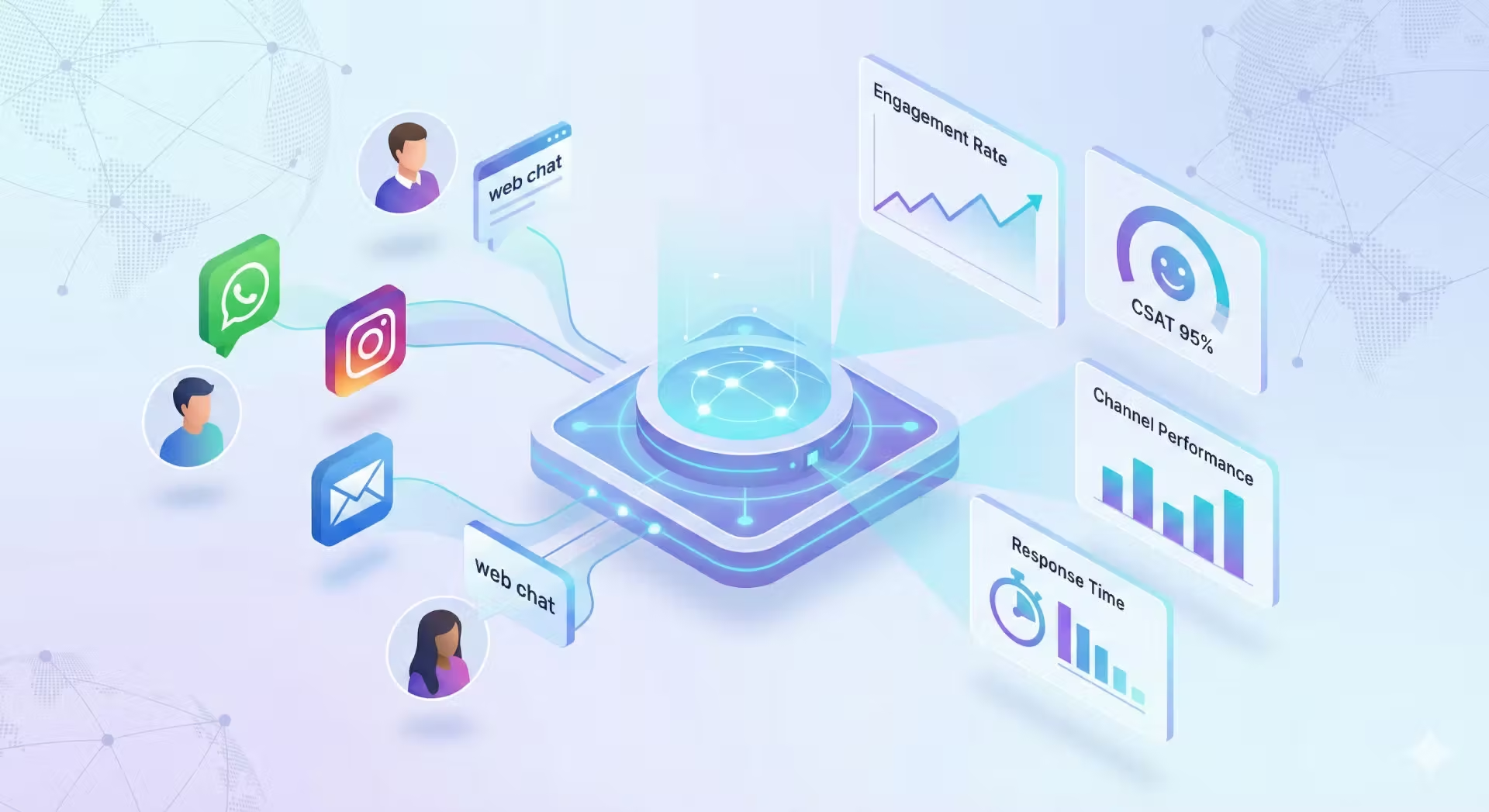Personalised service tailors the interactions your business has with each customer to their individual needs and preferences. This type of customised experience goes far beyond the traditional one-size-fits-all customer service model and can help you attract new customers and generate more revenue.
Personalised service uses your customer data to create tailored communications and solutions, which help build a deeper connection and improve your relationship with each person. This approach to customer service not only attracts new customers by giving them an experience that is better than the competition but it also increases customer retention by making customers feel valued and understood.
Let’s dive in!
So what is personalised service?
Personalised service is about recognising and responding to the fact that each customer has their own unique needs and preferences. It's the difference between being greeted with a generic "Welcome back" and "Welcome back, Alex! Looking for another pair of trail running shoes?" and then proceeding to list the options you have in stock in Alex’s size.
McKinsey's research shows just how important this personalised service approach is. Their survey found that 71% of consumers expect companies to deliver personalized interactions, and on top of that, 76% find it frustrating when those expectations aren't met. So, if you don’t adopt this approach, not only will you not be enticing customers to stick around, but you could actively push them towards your competitors.
There are a lot of ways your business can introduce personalised service into its customer service strategy. Some examples include:
- Product recommendations: An online bookstore could suggest new releases based on a customer's previous purchases.
- Customised discounts: You could send personalised birthday discounts or loyalty rewards to customers to show how much you value them.
- Adjustable services: A fitness app could tailor workout plans to its subscribers progress and feedback to help support and encourage them.
Why do customers expect personalisation?
According to Deloitte research, 97% of marketing leaders acknowledge customer experience management as crucial for fostering loyalty and maintaining relationships.
People have high expectations, and at the same time are bombarded with options. This sounds like a big challenge, but on the other hand it also poses opportunities. Because when businesses deliver an exceptional and tailored customer experience they have a distinct competitive advantage.
The challenge for many businesses is how to meet and surpass the evolving expectations of their customers.
The answer is: a strategic blend of data analysis and customer understanding to create authentic, personalised interactions.
💡In the past, data collection was disconnected and siloed but with advances in recent years, you can now create comprehensive customer profiles of each customer to understand them on a deeper level. Through tools like AI and advanced analytics, you can sift through huge quantities of data in real-time, and find the key information you need to make informed decisions, on the fly, that cater to the unique needs of each customer.
Back to, why personalised service will bring you new customers and revenue
Companies leading the charge in personalisation generate 40% more revenue from these efforts compared to those lagging. If that doesn’t have you convinced you need to be creating personalised services for your customers, here are some of the benefits you’ll experience when personalising:
1. Customer satisfaction and loyalty will increase
Personalised service creates emotional connections. By understanding and responding to the unique needs of your customers, you can make them feel valued and heard.
Have you ever had a local coffee shop where you go in and they just know your “usual.” They prepare your flat white with coconut milk as soon as you walk in the door, ask you about your dog or kids while you pay at the checkout and write a cute message on your cup that makes you smile as you walk out. Maybe they don’t make the best coffee in your neighbourhood, but you like the staff and how you are treated so you keep going back. This is the kind of loyalty you can create online with personalised customer service.
2. Customer retention and lifetime value will go up
The key to increasing customer retention and lifetime value lies in continuously adapting to customer feedback. By engaging in a cycle of testing, learning, and improving, you preemptively aim to meet customer needs.
🔎For example, a subscription-based meal delivery service can analyse customer order history and dietary preferences to recommend new dishes or meal plans. Over time, as the service adapts to the changing tastes or nutritional goals of the customer they will increasingly feel understood, reducing the chance of them switching to a competitor.
3. Strong brand advocacy
Happy customers are the best advocates for a brand. Personalised service naturally encourages these happy customers to share their positive experiences. This word-of-mouth marketing is powerful, as recommendations from friends or family carry more weight than traditional advertising.
4. Gaining a competitive advantage in your market
Personalised service helps your business to stand out by offering unique, tailored experiences that competitors might not.
🔎Amazon is a great example of this. Its recommendations come from a range of customer data points, including past purchases, search history, and even time spent viewing products. This allows Amazon to suggest items that customers are more likely to buy, improving the experience for them and increasing sales.
Overcome your personalisation challenges
While there are many benefits to implementing personalised service, it does not come without its challenges. Here are some common ones you might encounter during implementation and how you can overcome them.
Data privacy concerns
Customers today are more aware and concerned about how their personal information is being used. This sensitivity around privacy can make customers hesitant to share the data necessary for personalisation.
✅Solution: The key is to build trust through transparency and control. For instance, Apple's approach to user privacy gives each person control over what data they share and how it's used. Providing clear, accessible privacy policies and opt-in options like Apple has done reassure your customers that their data is being handled with care.
Resource constraints
Small and medium-sized businesses often struggle with implementing personalised services due to limited budgets, technical knowledge and time within their teams. Creating a personalised experience can require significant investment in technology and analytics and training staff on those new tools.
✅Solution: Harness versatile and cost-efficient tools that offer personalisation capabilities without the need for significant investment. Trengo is a platform that does just that. It enables businesses to manage customer interactions across various channels from a single dashboard, giving you the power to create personalised communication without the overhead of multiple specialised tools. By integrating customer data from different touchpoints, Trengo allows SMEs to create personalised experiences that rival that of larger competitors without the need for huge investments.
Integrating personalisation across channels
Seamless personalised experience across every customer touchpoint, from social media to customer support, poses a challenge. This requires a view of the customer across different platforms and touchpoints, which can be difficult to achieve due to data silos and inconsistent data collection methods.
✅Solution: Multichannel is the magic word. Bring all your channels together. While your team can work from one overview, a unified customer data platform (CDP) can also help consolidate your data across channels to create more consistent personalisation. This will help ensure your brand tone is the same in every communication and that your customers don’t have to repeat themselves when communicating on a new platform.
Keeping up with evolving customer expectations
Customer expectations for personalisation are constantly evolving, with preferences and behaviours changing rapidly. Staying ahead of these changes and updating personalisation strategies to meet these new expectations is tough.
✅Solution: Adopting a culture of continuous testing and feedback allows you to stay agile. Netflix exemplifies this with its ever-evolving recommendation algorithms, which are constantly updated based on viewing habits, feedback, and new content, ensuring that personalisation keeps pace with user preferences.
Last step, how do you implement personalisation into your customer engagement strategy:
Here are some tips for how to integrate personalised service into your customer engagement strategy:
1. Dive into your data insights
The foundation of personalised service is a deep understanding of your customers, achieved through data-driven insights. Collecting and analysing data on customer behaviours, preferences, and interactions enables you to create detailed customer profiles.
These profiles are essential for predicting customer needs and preferences, allowing for more targeted and relevant interactions.
- Use customer data: Implement tools that collect customer data from various sources, including social media, purchase history, and website interactions. This consolidated view helps you to identify patterns and trends that can improve your personalised experiences.
- Rely on data analytics tools: Invest in analytics platforms that offer insights into customer behaviour and preferences. These tools can highlight opportunities for personalisation across the customer journey and save your team a lot of time and effort.
2. Segment and target
Effective personalisation requires your business to segment its customer base into specific groups with similar preferences. This helps you to tailor your marketing and communications to more precisely meet the needs of the people in that group.
- Segment per demographic: Use your data to group together your customers by demographics such as age, gender and location and psychographics such as interests, values and lifestyle.
- Tailor your offerings: Create different offerings and communication strategies for each of your segments. For example, a younger audience might want to be contacted with app notifications, while older customers may prefer email.
3. Personalise service and communication
Communicating with customers in a personal and relevant way is key to making them feel valued and fostering a long-lasting relationship.
- Use customer names and preferences: Address customers by name in communications where possible and reference their past interactions or preferences. Keeping this record means they don't have to repeat themselves, saving them time, energy and frustration.
- Recommend relevant services and products: Use customer data to make personalised product or service recommendations. Netflix's recommendation system, which suggests shows and movies based on viewing history, is one example of effective use of personalised communication.
4. Be proactive in your engagement
Anticipate customer needs and offer solutions or assistance before they ask to make them feel valued.
- Automate triggers based on customer behaviour: Set up automated systems that trigger specific actions based on customer behaviour. For example, a mechanic can send out an email about a customer's yearly car checkup a month before it is due so the customer remembers and has time to book it.
- Lifecycle stage: Tailor communication and offers based on the customer's lifecycle stage, such as onboarding emails for new customers or loyalty rewards for long-term customers.
5. Empower your team
Providing your team with the tools and autonomy they need to deliver personalised service is essential to gain all the benefits we have mentioned. This includes things like training them on empathy and customer service, as well as giving them access to customer data.
- Train in personalisation: Give your team the knowledge they need to understand and implement personalisation strategies and understand their importance.
- Give access to customer insights: Ensure your customer-facing teams have easy access to customer profiles and history so they tailor their interactions from the first moment they speak with a customer.
And, how do others use personalised service to wow their customers?
Cadbury's hyper-personalised campaign
Cadbury's innovative use of customer information for a hyper-personalised video ad campaign leveraged data like age, location, and preferences from Facebook (with consent). This personalised service delivered great results for Cadburys which included a 65% increase in click-through rates and a 33.6% boost in conversion rates.
The Polar Company's efficient communication
The Polar Company, recognising the need for a personal touch initially faced challenges in sending personalised WhatsApp messages. By implementing Trengo, they were able to streamline their process, combining multiple communication channels into one platform. This allowed them to build a personalised service that worked at scale, handling around 300 tickets daily.
What’s next? What are the trends and innovations that will simplify personalisation
The customer engagement landscape continues to evolve. Here are four key trends that we are seeing shape the future of personalisation.
- AI and machine learning: Advanced algorithms are transforming how businesses understand customer behaviour, enabling real-time personalised experiences and predictive analytics for future preferences.
- Voice and visual search: As voice-activated devices and image search grow in popularity, personalisation strategies are starting to evolve to include these interfaces.
- Blockchain for privacy: We think we will see more businesses using blockchain technology to enhance data privacy. Blockchain can be used to give customers control over their personal information while still allowing for personalised experiences.
- Omnichannel personalisation: Integrating seamless omnichannel personalisation across all customer touch points from social media to in-store experiences, is a game changer. In 2025, we expect more businesses to adopt this strategy.
Personal service will attract customers and boost revenue
Personalise your service. It’s easier than it sounds and, to be honest, customers are expecting it. Integrate the mentioned personalised service techniques into your business, and give a huge boost to every customer conversation your team is having.
Book a demo
And discover how Trengo can simplify and improve your personalisation efforts with features like multichannel communication, automated responses and more.




.png)











